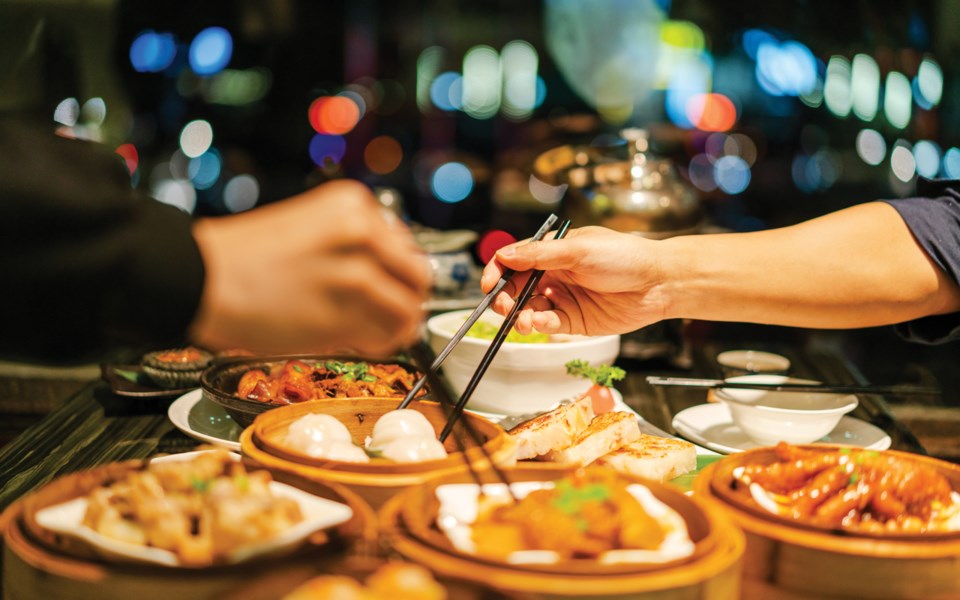Late, great TV host, chef, author, nomad and all-around bon vivant Anthony Bourdain once had this to say about the West’s antiquated belief that the food additive MSG is bad for you.
“You know what causes Chinese restaurant syndrome? Racism. ‘Ooh, I have a headache; it must have been the Chinese guy.’”
MSG, or monosodium glutamate, is an ingredient ubiquitous to Chinese kitchens the world over. That is, until, the 1960s and ’70s, when Chinese restaurants catering to the white-bread palates of the West began popping up all over North America. A 1968 letter to the editor in the New England Journal of Medicine suggested MSG caused weakness, dizziness, chest pain and a host of other vague symptoms it linked to the so-called “Chinese restaurant syndrome.” Thus, the xenophobic MSG panic was born.
It’s a perception so deeply entrenched that, as recently as 2020, Merriam-Webster had an entry for the term that described the syndrome as a legitimate illness brought on by food seasoned with MSG—but “especially Chinese food.” (The dictionary has since added a disclaimer noting the term as “dated” and “offensive.”)
Numerous research studies have concluded that MSG, which comes from glutamate, a common amino acid or protein building block naturally found in food, is a safe addition to your meal. Other studies with people identifying as sensitive to MSG have found that neither the additive nor a placebo caused consistent reactions.
Ultimately, it isn’t academic research papers helping shift racist perceptions of MSG (because who listens to scientists these days, am I right? Heavy sigh). Like much of the modern advancements in our understanding of food, it was actually a food manufacturing company that was almost solely responsible for moving the dial on MSG in North America—and they had to get pretty creative to do so.
Japanese mega-company Ajinomoto, a food processing and biotech firm that specializes in seasonings, sweeteners, cooking oils, and yes, MSG, has poured hundreds of thousands of dollars into MSG research. Around the turn of the millennium, the company switched gears, tapping biochemist Kumiko Ninomiya to convince the scientific community to accept umami as its own basic taste.
For the uninitiated, umami, also known as “savouriness,” is today understood as the “Fifth Taste” after sweet, sour, bitter and salty. People have debated whether it should be recognized as its own taste since Kikunae Ikeda first proposed its existence in 1908, and it wasn’t until the early 2000s that scientists determined it was, in fact, a taste, due to umami having its own distinct taste receptors that typically respond to nucleotides and glutamates, common in meat broths, fermented products and, of course, MSG. Coating the mouth in a pleasant, savoury aftertaste, umami is often used to round out a dish and can be found in foods such as mushrooms, tomatoes, cheese, shellfish and certain meats. (It’s also found in a long list of popular processed foods, like Doritos and ranch dressing.)
“If you eat a long cooked stew or slurping chicken soup or, you know, biting a slice of the pepperoni and mushroom pizza, you feel a long-lasting and a very comfortable aftertaste. And that’s umami,” Ninomiya said in a recent episode of the Vox podcast, Unexplainable. (A fascinating listen that is totally worth checking out, by the way.)
After Ninomiya’s Herculean efforts convinced the scientific community of the existence of umami (Unexplainable credits her decades-long campaign with changing “the field of sensory science forever”), she quickly set her sights on the culinary world. Ninomiya, known today as the “Umami Mama,” decided the best way to persuade food writers and Michelin chefs of the value of MSG was through their stomachs.
With Ajinomoto’s blessing, she soon embarked on a gastronomic tour of sorts, organizing International Symposiums on Umami Taste that featured lavish spreads of Japanese cuisine for the top tastemakers of North America.
“That’s why I think that tasting is the most important part,” Ninomiya told Unexplainable. “So through the symposium, I try to make an opportunity to have our tasting session about umami taste and how to find umami in the tomato or cheese. And they gradually understand what the umami is.”
It certainly wasn’t the only factor, but that precipitated a Japanese food boom that has yet to let up two decades later, and soon enough, umami was everywhere.
Sadly, while considerable progress has been made on changing widespread views of MSG, there is still work to be done on that front. In fact, it was Ajinomoto that persuaded Merriam-Webster in 2020 to update its definition of Chinese restaurant syndrome, part of its wider “Redefine CRS” campaign, led by a number of prominent Asian-American restaurateurs, chefs and medical professionals.
“To this day, the myth around MSG is ingrained in America’s consciousness, with Asian food and culture still receiving unfair blame,” the company said on its campaign website. “Chinese Restaurant Syndrome isn’t just scientifically false—it’s xenophobic.”




